On this Saint Patrick’s Day, learn how to make this punchy lime green!
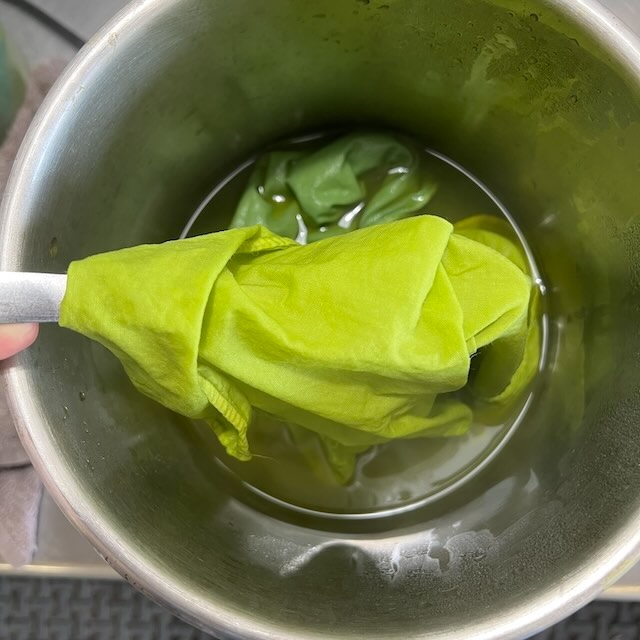
We are pulling this exciting color back from our archives. Wink wink, you might remember it from this summer…Using weld and indigo, you can get awfully close to this punchy acid green. Natural dyes are often thought of as pastel or “soft” colors, but we’re here to help you make a hue that really packs a punch!
This is the basic recipe
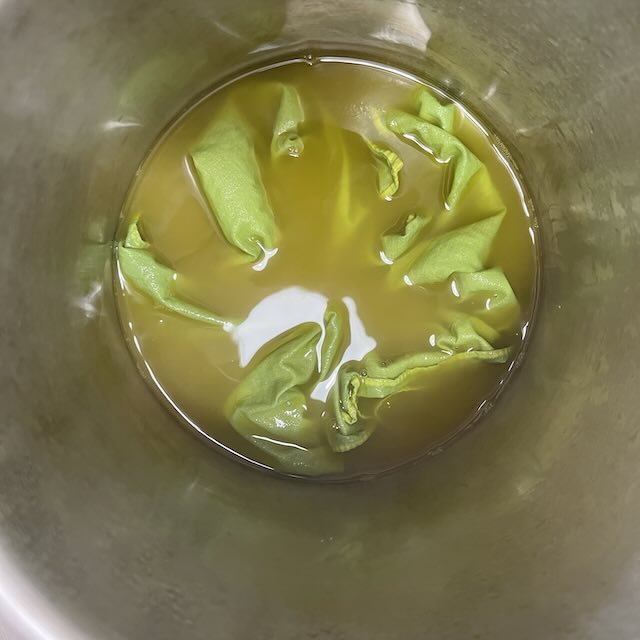
Start with a mordanted cotton bandana, soak it in warm water for 30 minutes to thoroughly wet it out, and dip in a very light indigo vat. You want to lightest, sky blue shade. Let it oxidize and rinse well. Next, measure 8% weld extract, 2% calcium carbonate and 2% soda ash. If you want to know the dry weight, the bandana is about 34 grams. Carefully dissolve and mix the ingredients together. Add the dye mix to a dye pot large enough to hold the bandana and filled with enough water so the bandana can move easily. Stir the dye well. Put the indigo dipped bandana into the dye pot and start heating the dye pot gradually while stirring and moving the bandana. Once the temperature is between 125-150F, the rich yellow color will develop. With the light indigo background, the color will turn a bright chartreuse green! Rinse well in room temperature water and dry away from direct light. Note: we use a lot of weld to get a super saturated color. Plan to exhaust the dye bath with additional shades of indigo and adding them to the dye pot once you’ve achieved the weld color. If you look carefully at the image, you can see another green made with a slightly darker indigo dip in the pot. You’ll be able to get colors like chartreuse, teal and other lovely green shades.
For silk and wool fabrics or yarn: Mordant with aluminum potassium sulfate at 15%. Follow the same recipe as above, but reduce soda ash percentage to 0.5% and calcium carbonate to 1%. The image below shows brat on silk yarn and cotton fibers.
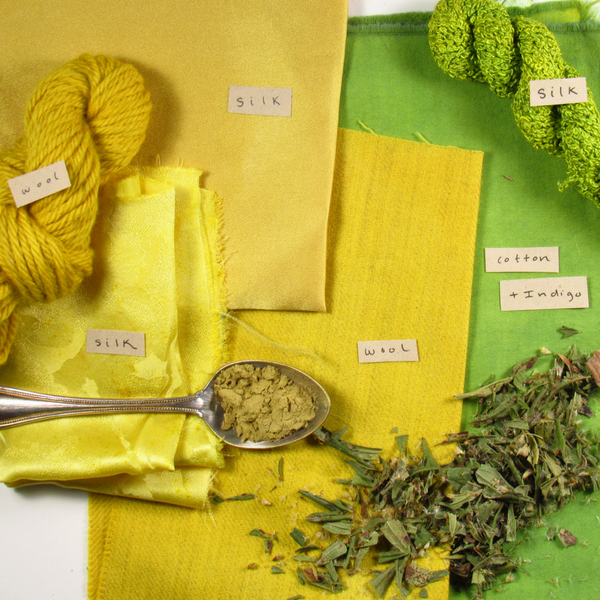
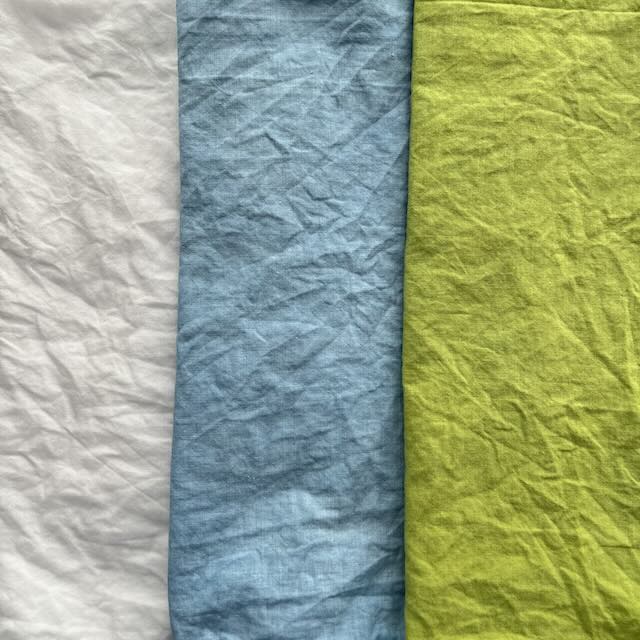

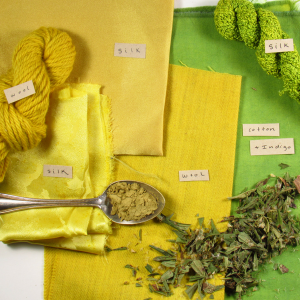
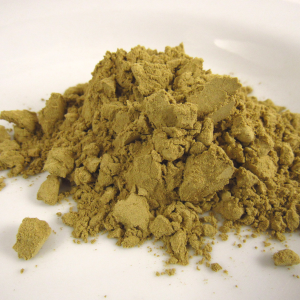
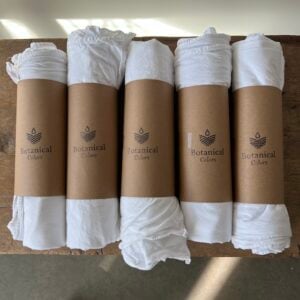
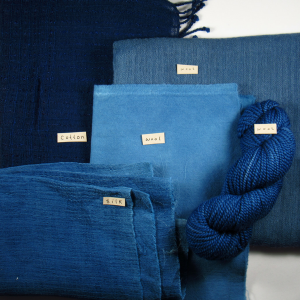
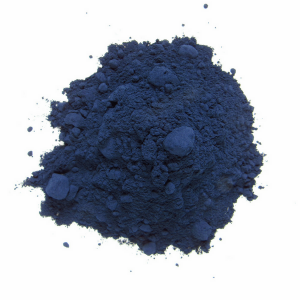
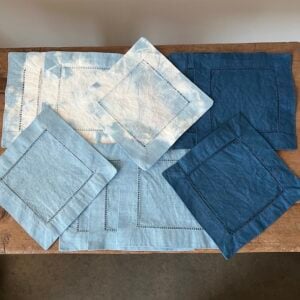
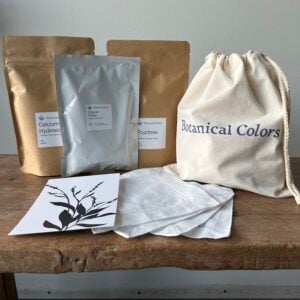




Thank you, Kathy. This is one of my favorite colors. I wonder if you could help me with 2 questions. 1. I was taught that indigo requires more than one dip to be lasting. Is that not the case when you’re overdyeing it with another color? Or over time will this beautiful green start to look more yellow? 2. In other places on your site you mention mordanting after you dye in indigo before overdyeing . Here you say to mordant before the indigo. Are you not concerned the alkalinity of the indigo vat will lessen the effectiveness of the mordant? Thank you very much for your help and expertise.
Hi Mary Jane,
We do use a minimum of 2 indigo dips in a very light vat to achieve a more long-lasting light green.It is a challenge to have a long-lasting lime green on cotton fabrics and we’ve had more long term success with wool.Regarding mordanting before or after indigo: our normal practice is to scour, dye in indigo, mordant and then dye in the mordant dye. However, if something is already mordanted and we’re doing a couple of light dips (a few minutes in the indigo vat), then I don’t worry about it so much. Dyeing the mordanted color first and then applying indigo second is also a great way to experiment with color development and adjust the indigo shades as you can see the final result very quickly and make changes if needed. When you dip with indigo first, you’re “guessing” the shade you’ll need to achieve the color. Both are fun to do!